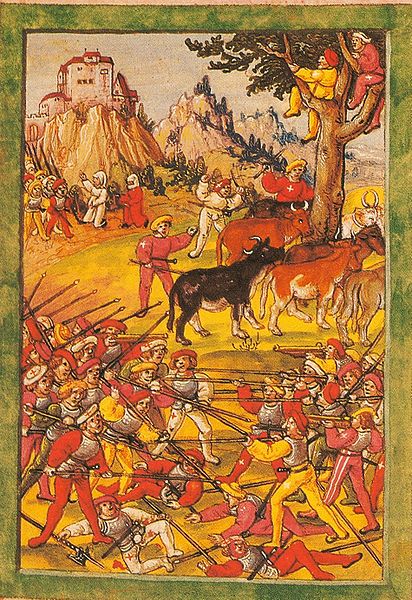Border reivers were raiders along the Anglo-Scottish border from the late 13th century to the beginning of the 17th century. They included both Scottish and English people, and they raided the entire border country without regard to their victims' nationality. Their heyday was in the last hundred years of their existence, during the time of the House of Stuart in the Kingdom of Scotland and the House of Tudor in the Kingdom of England.
Reivers at Gilnockie Tower in Dumfries and Galloway, Scotland, from a 19th-century print
Notorious raider, Walter Scott of Harden's horn, noted in a poem called "The Reiver's Wedding" by Sir Walter Scott. It reads in part: "He took a bugle frae his side, With names carved o'er and o'er, Full many a chief of meikle pride, That Border bugle bore."
Dryhope Tower near Selkirk in Scotland, built in the 1500s for protection against the reivers
Auld Wat of Harden by Tom Scott. A romanticised image of a notorious raider, Walter Scott of Harden.
Cattle raiding is the act of stealing live cattle, often several or many at once. In Australia, such stealing is often referred to as duffing, and the perpetrator as a duffer. In other areas, especially in Queensland, the practice is known as poddy-dodging with the perpetrator known as a poddy-dodger. In North America, especially in the Wild West cowboy culture, cattle theft is dubbed rustling, while an individual who engages in it is a rustler.
A cattle raid during the Swabian War, 1499
Depiction of cattle raid in Ireland c. 1580 in The Image of Irelande by John Derricke.
The Beefsteak Raid (1864) during the American Civil War.
El Malón, Johann Moritz Rugendas (1802–1858)








